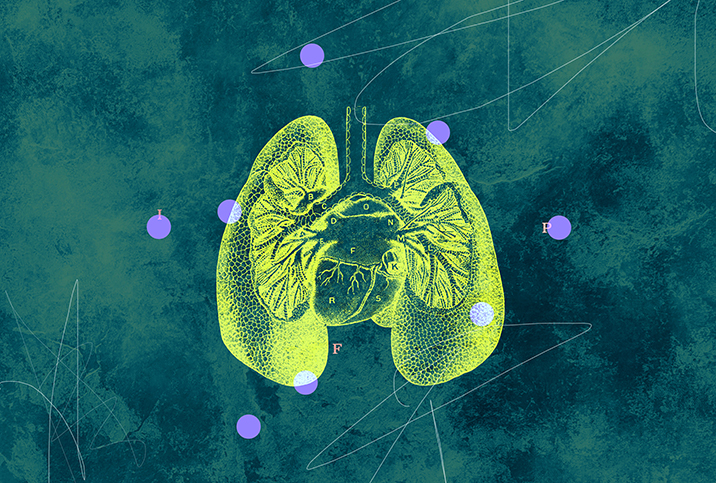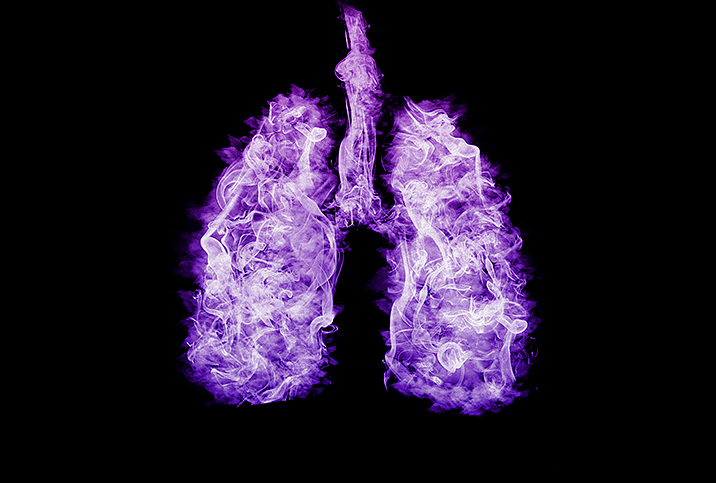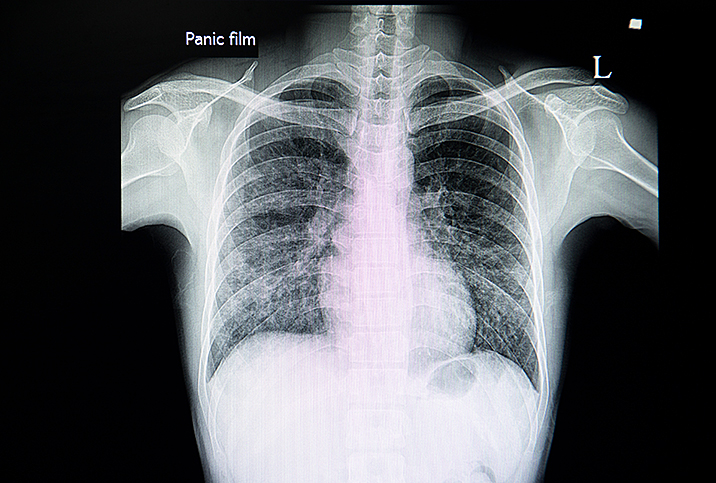A Giddy Guide to Idiopathic Pulmonary Fibrosis

Even though COVID-19 has proved to be more than a respiratory illness—it causes a hyperinflammatory state that can cause blood clots anywhere in the body, potentially leading to a stroke—the virus brought much attention to respiratory health at large.
However, some folks were already familiar with battling chronic illnesses of unknown origin, especially people with idiopathic pulmonary fibrosis (IPF). Research published in May 2022 indicates 44.9 percent of COVID-19 survivors appear to have developed pulmonary fibrosis.
The most common form of pulmonary fibrosis is IPF, which affects about 130,000 people in the United States, with around 50,000 new cases diagnosed each year. About 40,000 deaths due to IPF are recorded per year, more frequently among males, while females are reportedly better able to survive.
Idiopathic pulmonary fibrosis explained
In medical terms, fibrosis is the scarring or thickening of the normally lacy and thin walls of the air sacs in the lungs. When they become scarred, stiff and thick, they are known as fibrotic. At this point, breathing may become difficult. Getting a diagnosis and starting treatment early is the best chance of having your lungs work better and longer.
"The most common symptoms of idiopathic pulmonary fibrosis are shortness of breath and a cough," said Avraham Z. Cooper, M.D., an assistant professor of medicine in the division of pulmonary, critical care and sleep medicine at Ohio State University.
"Although we don't know exactly what causes idiopathic pulmonary fibrosis, there are certain exposures that increase the risk of developing it. The strongest association is with smoking cigarettes, though exposure to inhaled wood or stone particles may predispose to idiopathic pulmonary fibrosis as well," Cooper continued. "There may be some association with gastroesophageal reflux disease, though how much that contributes to a risk of idiopathic pulmonary fibrosis is unknown."
Getting a diagnosis and starting treatment early is the best chance of having your lungs work better and longer.
Other symptoms of idiopathic pulmonary fibrosis are fatigue and weight loss that are not easily explained. As the disease progresses, some people may experience clubbing, where fingertips or toes start to look different, becoming wider or rounder. Another symptom is cyanosis, or having too little oxygen in the blood, where fair-skinned people develop bluish skin and dark-skinned people develop gray or white skin around the mouth or eyes.
"Lung fibrosis, in general, can arise for a number of reasons, including infections, autoimmune disease, occupational or environmental exposures, or from medications," Cooper explained. "Idiopathic pulmonary fibrosis differs from other forms of pulmonary fibrosis in that we do not know why exactly any given patient develops lung scarring in this way. Some people inherit a genetic predisposition to developing idiopathic pulmonary fibrosis, something called familial IPF, but this is very rare. Researchers still have much to learn about how, and which, genes may cause pulmonary fibrosis."
Risk factors include older age (50 to 70 years), male biological sex, a history of smoking cigarettes and a family history of pulmonary fibrosis. Other factors include working around dust and fumes, radiation exposure, and medical conditions such as rheumatoid arthritis and viral infections. Chemotherapy and heart medications may also play a role. Radiation therapy for cancer can also possibly damage lung tissue.
Diagnosis and treatment
"IPF can, in many cases, be diagnosed on the basis of a CT scan that has a typical appearance we call 'usual interstitial pneumonia,' and an evaluation including an occupational history and blood tests that rule out another cause, such as exposures or autoimmune diseases," said Fabio Giron, M.D., a pulmonologist at NYU Langone Health in New York City and an assistant professor in the department of medicine at NYU Grossman School of Medicine. "In some cases, its appearance on the CT scan of the lungs may be suggestive but not diagnostic, and a surgical biopsy of the lung may be needed to confirm."
Medical providers often use tests to eliminate other illnesses, such as pulmonary function tests to determine lung capacity and an oxygen saturation study to measure oxygen levels in the blood.
Other than supportive treatments like oxygen and pulmonary rehabilitation, there are two medications that specifically treat idiopathic pulmonary fibrosis: pirfenidone (brand name Esbriet) and nintedanib (Ofev). These agents can slow the progression of the disease by 50 percent but do not improve or cure the disorder.
Smokers are recommended to quit, and gastroesophageal reflux disease (GERD) should be treated with stomach acid suppression. Idiopathic pulmonary fibrosis is a progressive disease, and many patients eventually require evaluation for lung transplantation.
Living and loving with IPF
Early on after the diagnosis of idiopathic pulmonary fibrosis, having a normal sex life should not be a problem. As the disease progresses—for instance, if you find it's harder to walk up a flight of stairs and you need supplemental oxygen—compromises may need to be made in the bedroom.
If you use oxygen, you should keep it on during intimate moments. Spare the embarrassment and keep the oxygen flowing. Your partner will appreciate the stamina your oxygen provides. Be mindful of exerting too much energy. The trick is to pace yourself and let your partner do most of the work. Breathing exercises can help you control your breathing during sex.
As the disease progresses, compromises may need to be made in the bedroom.
Keep talking and tell your partner how you're feeling. Let them know you're not only fit and fine but having a good time, too. Alongside good communication, it's best to schedule a good time at the right place and to experiment with comfortable positions.
Using sildenafil (Viagra) or tadalafil (Cialis) could be good for your sex life—and your IPF. According to research published in 2007, IPF patients treated with Viagra improved their walking distance by at least 20 percent. However, there may be issues if you're already prescribed nitrates to relax your arteries, so check with your healthcare provider before adding any medicines to your daily regimen.
A diagnosis of idiopathic pulmonary fibrosis is difficult because symptoms don't get easier as the disease progresses and there's no known cure. Life expectancy can be as long as 10 years after diagnosis, but every patient's outlook is different. Understanding the nature of the disease and having a treatment plan are important. Some other ways you can materially affect your condition are to eat healthily, exercise regularly, quit smoking, always get a flu shot, ensure you're up to date with COVID-19 vaccinations, and try to relax and keep stress from overwhelming you.
For online research and resources, visit the American Thoracic Society, the European Respiratory Society and the Latin American Thoracic Association.


















